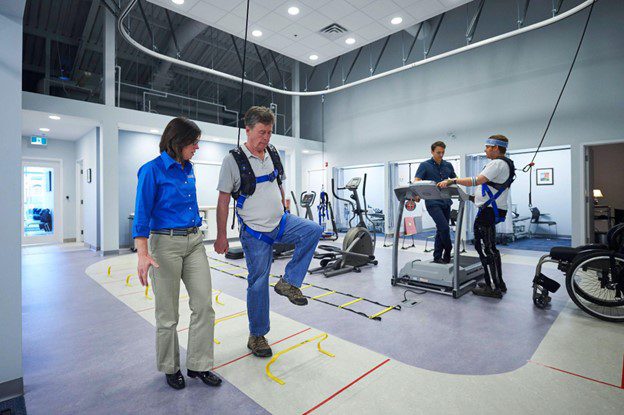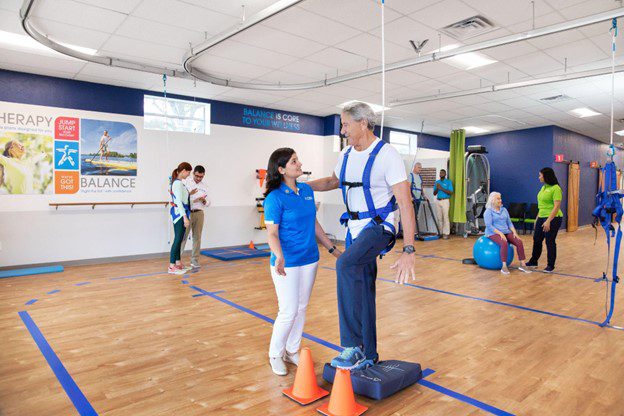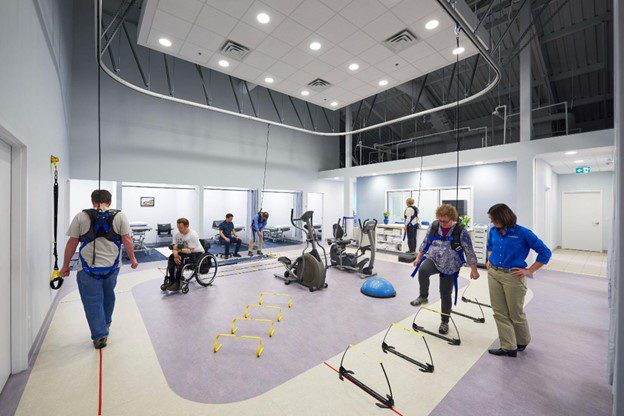Preventing Falls with Vestibular Rehabilitation

Falls among older adults are a significant concern and often lead to serious injuries and a loss of independence. While several factors contribute to falls, one often overlooked aspect is the health of the vestibular system. The vestibular system plays a crucial role in maintaining balance and stability. Vestibular rehabilitation offers a promising path to prevent falls and improve the overall quality of life for those at risk. Continue reading to learn more about how vestibular rehabilitation can be a key element in preventing falls in your facility!
Understanding the Vestibular System
The vestibular system is a very intricate system that consists of the inner ear and the brain. It is responsible for processing sensory information related to balance and spatial orientation. When the vestibular system is compromised due to a disorder or aging, individuals may experience dizziness, vertigo, and impaired balance.
Who Can Benefit from Vestibular Rehabilitation?

Vestibular rehabilitation is not solely for those with diagnosed vestibular disorders; it can be beneficial for a broader audience. Individuals who can benefit from vestibular rehabilitation include:
- Older Adults: As we age, our vestibular system naturally deteriorates. Vestibular rehabilitation can help older adults maintain their balance and reduce their risk of falling.
- Individuals with Vestibular Disorders: People diagnosed with vestibular disorders like Meniere’s disease, vestibular neuritis, or benign paroxysmal positional vertigo (BPPV) can find relief through targeted rehabilitation exercises.
- Post-Surgery Recovery: After certain surgeries, such as ear or brain surgeries, vestibular rehabilitation can aid in regaining balance and reducing postoperative dizziness.
- Athletes and Active Individuals: Athletes and those involved in sports that require balance, agility, and spatial awareness can use vestibular rehabilitation to enhance their performance.
How Vestibular Rehabilitation Works

Vestibular rehabilitation is typically carried out by trained physical therapists or occupational therapists. Here’s a brief overview of how it works:
- Assessment: The process begins with a thorough assessment of the patient’s vestibular function. This evaluation helps identify specific issues and tailor the rehabilitation program accordingly.
- Customized Exercise Plan: Based on the assessment, a personalized exercise plan is created. These exercises often include gaze stabilization exercises, balance training, and habituation exercises designed to improve balance, coordination, and reduce dizziness.
- Progressive Improvement: Over time, patients work through their exercise program, gradually improving their vestibular function. Progress is closely monitored, and adjustments are made as needed.
The Impact on Fall Prevention
So, how does vestibular rehabilitation help prevent falls?
- Improves Balance: Vestibular rehabilitation exercises challenge and strengthen the balance system, helping individuals regain and maintain steadiness on their feet.
- Enhances Coordination: These exercises also improve coordination, making it easier to react to sudden changes in position or terrain.
- Reduces Dizziness: For those experiencing dizziness or vertigo, vestibular rehabilitation can significantly reduce these symptoms, allowing for more stable movement.
- Increases Confidence: Your patients confidence will increase as they gain better control over their balance and experience fewer episodes of dizziness.
What Equipment is Beneficial During Vestibular Rehabilitation?

Vestibular rehabilitation often relies on specific exercises and techniques to improve balance and reduce symptoms related to vestibular disorders. While many exercises can be performed without specialized equipment, some equipment can enhance the effectiveness of vestibular rehabilitation. Choose specific equipment depending on your patient’s condition and their specific therapy goals. Some beneficial equipment commonly used in vestibular rehab includes:
- Overhead Track & Harness System: The Solo-Step Overhead Track and Harness System keeps your patients safe and protected from accidental falls. It is an aluminum ceiling-mounted track system that keeps your patient protected from falls during rehabilitation. The Solo-Step can be used with many different pieces of equipment, allowing your patient to challenge themselves while remaining safe. Click here to learn more!
- Exercise Balls (Stability Balls): Patients can sit, kneel, or stand on exercise or stability balls while performing controlled movements to challenge their balance and core strength.
- Foam Pads or Balance Cushions: These soft and unstable surfaces are used to make standing or sitting exercises more challenging. They help improve proprioception (awareness of body position) and enhance balance training.
- BOSU Trainer: The BOSU trainer is a half-sphere platform with a flat bottom. It can be used for balance exercises, and its unstable surface adds an extra challenge to exercises.
- Balance Boards: Balance boards come in various designs. They are helpful for training balance and proprioception and can be used in sitting or standing positions.
- Visual Targets: Visual targets like cones or objects to focus on during exercises can help individuals improve gaze stability and visual tracking, which is crucial for managing dizziness and vertigo.
- Vestibular Rehabilitation Apps: Some apps and software programs provide interactive exercises and visual feedback to assist with vestibular rehabilitation. These can be used on tablets or computers.
Conclusion
Preventing falls is a main concern for maintaining a high quality of life, especially for older adults. Vestibular rehabilitation offers a valuable tool in achieving this goal by addressing the often-overlooked issue of vestibular health. Through targeted exercises and professional guidance, your patients can embark on a steady path to safety and regain the confidence to move freely and independently.
To learn more about the Solo-Step Overhead Track and Harness System, click the button below!